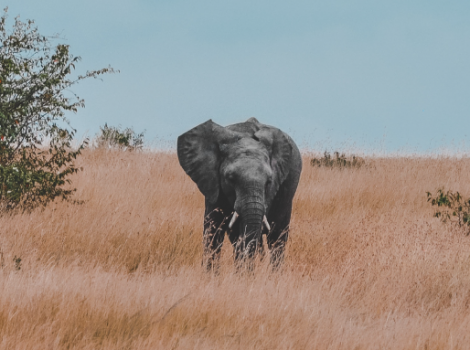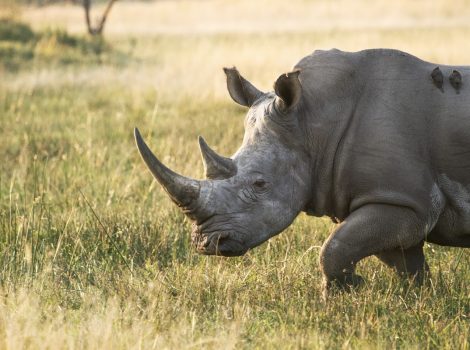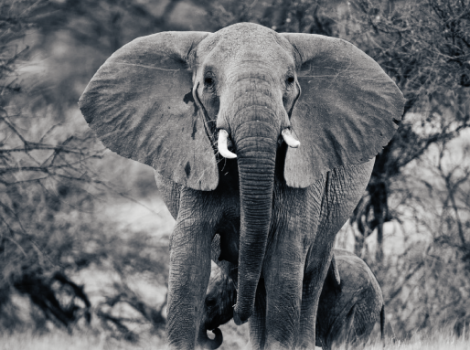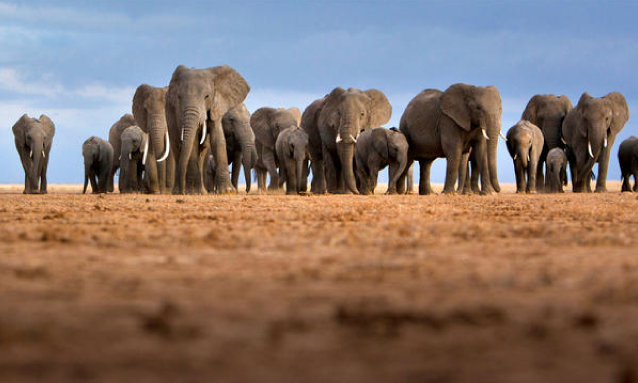
The Botswana government’s recent decision to lift the hunting suspension was met internationally with shock and horror, followed by a barrage of insults and condemnation, many from sources claiming to be conservationists. Much criticism came from preservationists fundamentally against sustainable utilisation.
Much criticism came from animal rights activists driven by their dismay in anything to do with sport or trophy hunting. Many of these critics have never been in rural Botswana and were selectively using newspaper clips and magazine articles to provide a one-sided picture. However, many other people were genuinely concerned about the elephants, as propaganda and biased journalism created a confusing picture of the real intention of reinstating hunting in Botswana.
The main question asked was why was it necessary to bring back hunting? Why jeopardising Botswana’s image as a leader in conservation, or risking a tourism boycott? The answer is actually very simple. The hunting ban has failed to protect people, elephants and other wildlife. As a result, more than 90 % of the people recently consulted in Botswana, were in favour of lifting the hunting ban.
The hunting ban was imposed in January 2014 as part of a wider policy of promoting photographic tourism by means of centralising the wildlife resources and marketing Botswana as a “safe haven for southern Africa’s elephants”. In the process, the rights of the communities over the wildlife resources were removed. Hunting, a source of income they had direct control over, was suspended without proper consultation to “ensure the protection of wildlife under pressure by overhunting and poaching.”
Promises of absorbing the hunting employment in the tourism industry were not fulfilled, the promises of transitional funds to support change over from hunting to photographic tourism were never provided, and community trusts, motivated by accusations of mismanagement of community funds, were frozen. Community-Based Organisations (CBO’s) became dormant while the once flourishing community-based resource management programs collapsed.
The hunting ban signified the start of a vicious cycle: a balanced but sometimes fragile co-existence based on wildlife derived benefits and tolerance incentives was disrupted. The influx of elephants closer to people and beyond areas where they never previously occurred, coupled with a simultaneous loss of benefits resulted in resentment and loss of value to conserve. The Human-Wildlife Conflict escalated, but compensation did not follow suit and funds were soon exhausted.
Many old hunting concessions unsuitable for photographic safaris were laid vacant, devoid of hunting activity and became havens for poachers. In others, where winter water provision ceased, the elephants moved closer to people. Inevitably, the need to curb poaching and the bush meat trade increased. Communities were not always involved, but many looked the other way, and as the illegal killings increased, so did the need for an intense militarised anti-poaching effort underwritten by a “shoot to kill”- policy. The elevated militarisation intensified the frustration and conflict between law enforcement and communities, even causing friction with neighbouring countries. It suppressed local poaching to some degree, but the growing resentment caused serious and eventual failing cracks in the wall of tolerance.
As the elephants dispersed further and further into Botswana, the conflict interfaces extended, placing enormous strain on Botswana’s anti-poaching resources. Promises of vast international support if hunting was banned never materialised. And the communities were left disillusioned and betrayed. The wealth of nearby high-end safari tourism outfits reminded them of the times that they were in charge of their own destinies, times when people’s wellbeing were valued more than those of animals.
The photographic safari industry bloomed and was contributing significantly to the GDP. But the benefits did not reach the grassroots. Even the jobs provided were not sufficient and left unemployment thriving in some villages. Not all skills needed for hunting could be absorbed in the tourism industry. Not all members of local communities can speak English or had the skills to provide services to high-end foreign tourists. As a result, the cooperation of the communities was lost by stifling their values of the wild animals around them. And by losing the cooperation of the communities, Botswana temporarily lost the ability to sustainably conserve its wildlife resources.
The communities were not the only losers. The wildlife suffered more, dying painful deaths through snaring, gunshot wounds and poison. Poachers have no mercy nor empathy. They will take the biggest tuskers, male or female. Despite the ceasing of hunting, stress levels in elephants remained high, partially due to the poaching and partially due to competition and the long distances to be travelled between food and water. Rainfall was scarce this year and starvation is looming. The body conditions of elephants are dropping and their temporal glands already dripping in distress.
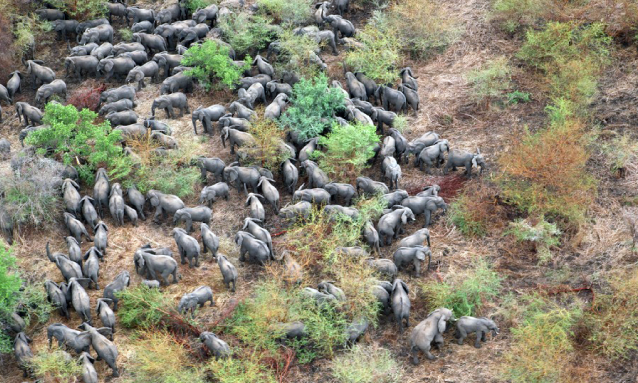
The hunting ban failed to improve the wildlife numbers or prevent to support anti-poaching. Elephants numbers increased from 55 000 in 1990 to 120 000 and more in 2012. According to some sources, the population remained stable since 2012 with no real increase during the hunting ban. To the contrary, elephant poaching reported before 2014 were insignificant compared to other parts of Africa but showed a sharp increase between 2014 and 2018 according to EWB. According to GoB census numbers, buffalo and other game numbers increased dramatically between 2003 and 2012. The trend did not continue after 2014.
The hunting ban has failed. It has failed democracy, it has failed the people of Botswana, and it has failed the elephants and conservation. It has caused more harm than good and simply became a marketing tool for the photographic industry.
The criticism bestowed on Botswana and President Masisi for lifting the hunting ban is therefore harsh and unfair. Even the most devoted preservationist must acknowledge what Botswana has achieved with elephant conservation. We are still looking after the largest population of African elephants in the world! Botswana set aside 17% of its land surface for Protected Areas accommodating at least 25,000 elephants. That is more than the total estimated populations for Angola, or Mozambique, or Namibia, or Zambia.
Botswana accommodates another 72,000 elephants in an additional 32% of Botswana as Wildlife Management Areas. Then there are more than 27,000 elephants roaming outside these wilderness areas in Botswana at densities of 1.2 elephant/km2, sharing resources with communities dependent on farming, sharing the most fertile parts of Botswana with its people. Farmers in these areas are on average within 400-500m from an elephant.
Botswana has more elephants than its resources can handle and its elephant conservation comes at a price. It is alleged that Africa has 20,000 people per elephant. Botswana has 18 people per elephant. There are more elephants in the Panhandle than people. It is threatening livelihoods and biodiversity. About 40 local people have been killed over the last ten years, most of them during the last five years. Crops and infrastructure are being destroyed and the biodiversity in some protected areas is buckling under the strain of the many elephants. Not only is it placing huge strain on the country’s resources, but the resentment, retaliation and poaching are threatening to decimate populations and species. It is therefore fair and necessary that Botswana’s people are allowed to choose conservation based on sustainable utilisation.
There are accusations of political motives to lift the hunting ban. In a positive sense, it is true. Communities were using their democratic right through their Members of Parliament to address the issues. A democratic process was followed, and the majority of people consulted were in favour of hunting and even culling. After a process of further consultation, the Cabinet decided on a responsible course for the country and the people. They selected hunting but rejected culling and embraced alternative non-lethal methods in cooperating with KAZA TFCA in the management of the overwhelming elephant conservation challenge. Sovereignty is a given right.
Conservation and democracy-based politics should be inseparable in a country where wildlife is part of daily life. Conservation is becoming the religion of the future. It may be so that the age-old “conservation religion” of southern Africa based on direct value differs from a modern “conservation religion” in the West build on compassion and intrinsic value. But ultimately, the objective is going to the same “heaven”. The President listened when the people spoke. So why do we hail the influence of environmental issues on voters in the EU Elections, but vilify the influence of environmental issues on voters in Botswana? Why do we sacrifice the principles of democracy and sovereignty when the outcome is not to our liking? Why do we condemn human rights abuse when it is driven by politics but support it when it involves elephants?
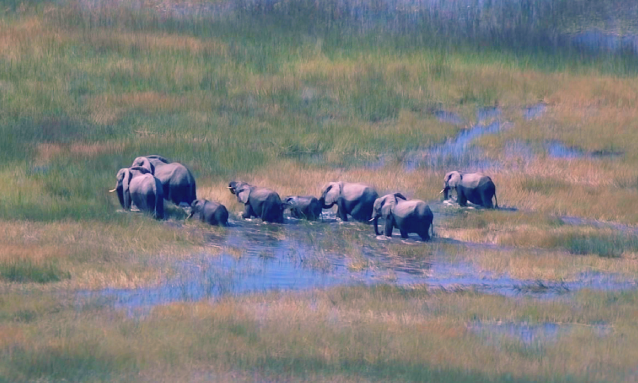
Botswana intends to hunt less than 400 elephants per year as per the country’s CITES ivory export quota. (Namibia has a quota of 90 elephants, Zimbabwe has a quota of 500). Hunting and photographic tourism are sustainability tools for biodiversity conservation that should co-exist together. It is small parts of the bigger picture, a picture that should largely embrace the rights of communities to control and benefit in a sustainable manner from the natural resources around them. Some communities will choose photographic avenues, some will choose hunting, and some will choose both. But it is important that communities have the choice. About 80% of the biodiversity of the planet is protected by indigenous people comprising only 5% of the world population according to the World Bank. How then, with such a dismal conservation record, can the Developed World dictate to these people how to protect our natural resources?
Even a total green militarisation approach as a solution to protect natural resources in Africa will not succeed if communities do not support it. A recent report showed that where communities suffer, wildlife suffers. Forceful protection of natural resources is not effective without the cooperation and inputs of communities and community members. The compassionate argument against consumptive utilisation of elephants is unrealistic. Botswana, like many other countries in Africa, cannot be a total “safe” haven for all elephant. The country is not one big game reserve and conflict is inevitable. The combination of Human-Wildlife conflict, poaching and limited resources will ensure some collateral losses.
However, these losses can be controlled and kept within acceptable levels if the role of communities in conservation is restored. We cannot expect compassion to let live if crops are destroyed, livestock is mauled, and people are killed. We cannot expect empathy for wildlife if people are prisoners in their own homes after dark. In rural Africa, empathy is based on value. The rights of people when sharing limited resources with wildlife, will always be considered first.
Rural Africa is not yet ready or equipped for animal rights fundamentals. Support for conservation still needs to be instilled based on value if it wants to exist. Intrinsic value (only) does not fill stomachs, and climate change and pollution in the presence of clear blue skies and silty river water, is a vague Developed World concept. Who are we to condone the morality of the hunter pulling the trigger when we turn a blind eye to the suffering caused by snaring and poaching, climate change and greenhouse gasses?
Lifting the hunting ban is not considered a population management tool. It will be used to promote the dispersal of elephants on local levels from hot spot conflict areas. Lifting the hunting ban will provide an alternative income to communities most affected by the conflict especially in areas where tourism alone has failed to provide the necessary sustainability. It will, therefore, provide more sustainable alternatives to poaching and the bush meat trade. The government is formulating frameworks that will ensure ownership of hunting and benefits are channelled to the communities. It is putting controls in place to ensure that hunting is based on research and will not negatively affect the conservation of species.
Yes, hunting may affect the welfare of some animals. It may create a sense of loss in some groups. Welfare and ethics should be strongly regulated. However, looking at the current situation where animals are snared, wounded and poached, and under constant nutritional stress, the agony and suffering by far surpass the loss of the hunted animals. As a result, sacrificing some animals will save many more.
We do not expect the world to agree. We request the world to try and understand. People and wildlife are part of the landscape in Botswana and need to be acknowledged as such. Boycotting Botswana may be your choice. But you may trigger the same vicious cycle that followed the hunting ban where sustainability for the communities will be removed, less money will be available to mitigate conflict and more bloodshed and suffering will follow.
Lifting the hunting ban is more than just about money. It is more than just about killing or the blood lust of rich white people. It is about democracy, sovereignty and conservation. Botswana does not support hunting. Botswana supports ethical hunting as one of the sustainability tools for conservation. That is the difference….
Source: Dr FJ Verreynne via Facebook
Dr FJ (Erik) Verreynne is a wildlife and livestock vet with a post-graduate wildlife management degree, who has been practising in Botswana since 2002.

